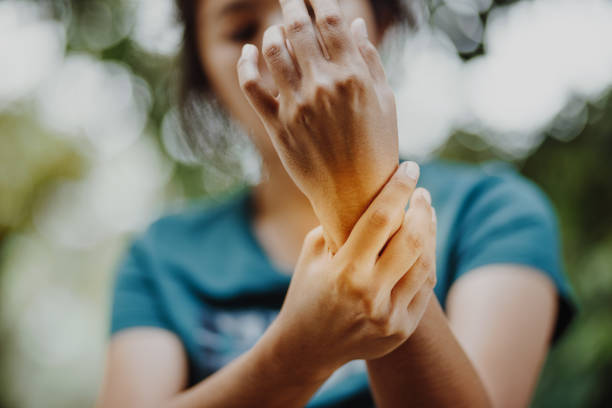Older people in particular are affected: rheumatism, arthrosis and arthritis lead to painful joints and restrict movement. Some sports can even contribute to healing.
What is what: The difference between rheumatism, arthrosis and arthritis
Rheumatoid arthritis is commonly referred to as “rheumatism”. Rather, rheumatism is the generic term for over 100 different diseases that are characterized by chronic pain in the musculoskeletal system. They mainly affect the bones, joints and spine as well as the associated muscles, tendons and ligaments.
According to the Rheumaakademie, rheumatoid arthritis is one of the most common inflammatory rheumatic diseases. The disease is caused by a malfunction in the immune system. This leads to chronic inflammation of the synovial membrane, which manifests itself in swelling, overheating and functional restrictions. If left untreated, this process leads to the destruction of cartilage and bone.
Osteoarthritis, on the other hand, is due to the wear and tear of the joints over the course of life. However, you can counteract this with the right diet.
Osteoarthritis: Which sports can you do?
Osteoarthritis patients often do not exercise due to severe pain. Under certain conditions, however, some sports are possible despite the illness. The Society for Orthopedic-Traumatological Sports Medicine (GOTS) recommends:
Cycling: Especially on the bike, the cyclic movement in a sitting position that relieves the strain on the lower extremities is particularly beneficial. A women’s bike or a low handlebar make it easier to get on and off.
Hiking with sticks
cross country skiing
water aerobics
In some sports you should already be practiced. This includes, for example, Nordic walking. The poles relieve the joints, but the steps are larger than with normal walking. This increases the effort. Experts speak of a higher impact. According to GOTS, sports with higher technical demands should also have been mastered before arthrosis develops, since learning with arthrosis is difficult or impossible. These include, above all, a restricted level of performance, these sports can certainly continue to be practiced. However, the experts recommend cushioned shoes, possibly walking aids or the use of a cart when playing golf. If you modify your sport, e.g. if you do without a pronounced trunk rotation in tennis, these sports can be very useful and also health-promoting according to GOTS.
Rheumatoid arthritis: which sports can you do?
For those affected by arthritis, the AOK recommends endurance training or strengthening exercises two to three times a week. According to the study, it has a positive effect on the heart and circulation. This is particularly important for rheumatism patients because they are at higher risk for
Swimming and water aerobics in lukewarm water
To go biking
Nordic walking
tai chi
yoga
training on devices
Sports that involve strong vibrations, poor posture and one-sided stress, such as tennis or soccer



